Acquiring a Second Home in Spain
Friday, April 19, 2024
Acquiring a second home in the sun-kissed realms of Spain is a venture many dream of. A haven away from the hustle and bustle, or perhaps a prudent investment – the reasons vary but the charm remains. The Spanish property market, with its vast array of second-home buyers, both local and international, entices with its promise of a picturesque locale and unparalleled quality of life. But what exactly does it entail financially to secure a second dwelling in this vibrant nation?
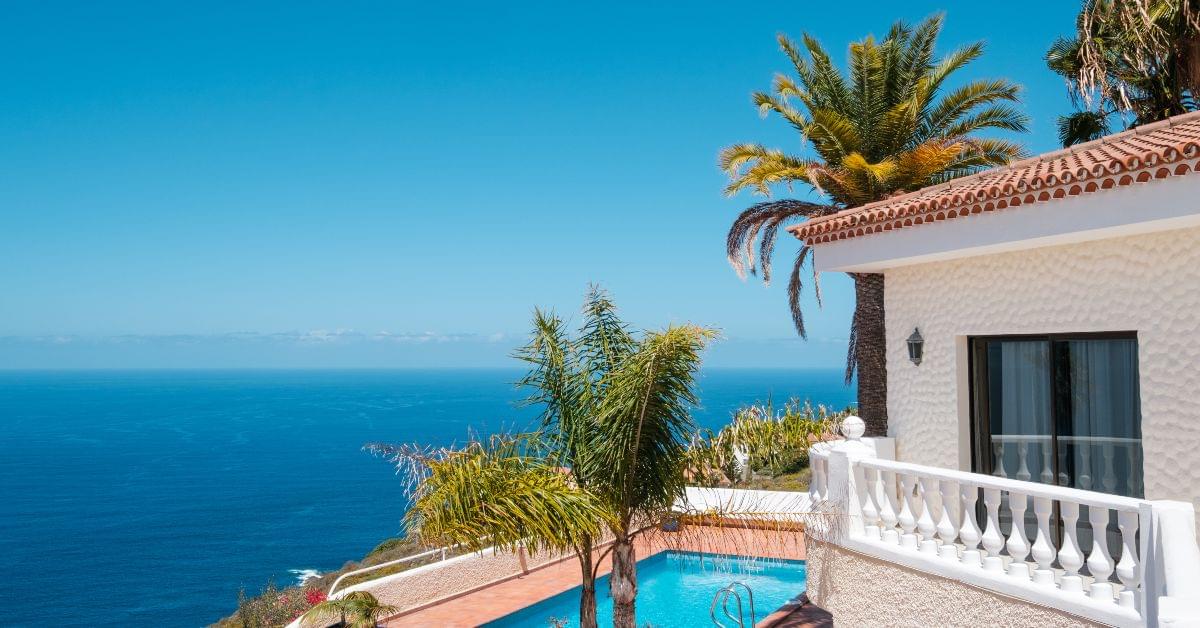
Embarking on the quest to buy a second home often foments questions about the fiscal implications – from taxes to deductions and the investment's worth. Let's simplify the intricate web of costs associated when you decide to invest in your Spanish escapade.
The Taxing Affair of Purchasing a Second Home
Property Transfer Tax and VAT
The Spanish tax system distinguishes between second-hand properties and new builds when it comes to taxes. For second-hand homes, you’re required to pay the Property Transfer Tax (ITP), which is between 6% to 10% based on the autonomous community's legislation. On the other hand, new properties incur Value Added Tax (VAT), set at 10%, along with 1% to 1.5% for the Documented Legal Acts Tax (AJD). These taxes are non-negotiable and a significant portion of your budget should be allocated for them.
Additional Expenses
Beyond taxes, the path to homeownership is paved with additional costs. Notary fees, registration fees for making it all official, management fees to handle the processes, and potential bank commissions all add weight to your financial outlay. Each has its own scale but typically, they all contribute to adding around 1% to 2% cost on top of the property price.
The Recurring Costs of Second Homeownership
Once you’ve leapt over the initial financial hurdle and possess the keys to your new abode, ongoing costs become a part of your annual budgeting.
Community Fees
Should your residence boast communal luxuries, such as a shared pool or gardens, this comes at a price. Community fees maintain these shared perks and their costs hinge on the services provided.
Real Estate Tax (IBI)
The Real Estate Tax (IBI) is an annual fee that differs across districts. It's essential to note that as a second home, the tax may surpass the rate of primary residences as some local councils extend discounts for the latter.
Upkeep: A Necessity
The practicalities of maintaining a property can't be ignored. Repair funds, general maintenance, utilities, and insurance to shield against unforeseen events are continuous financial commitments you must be prepared for.
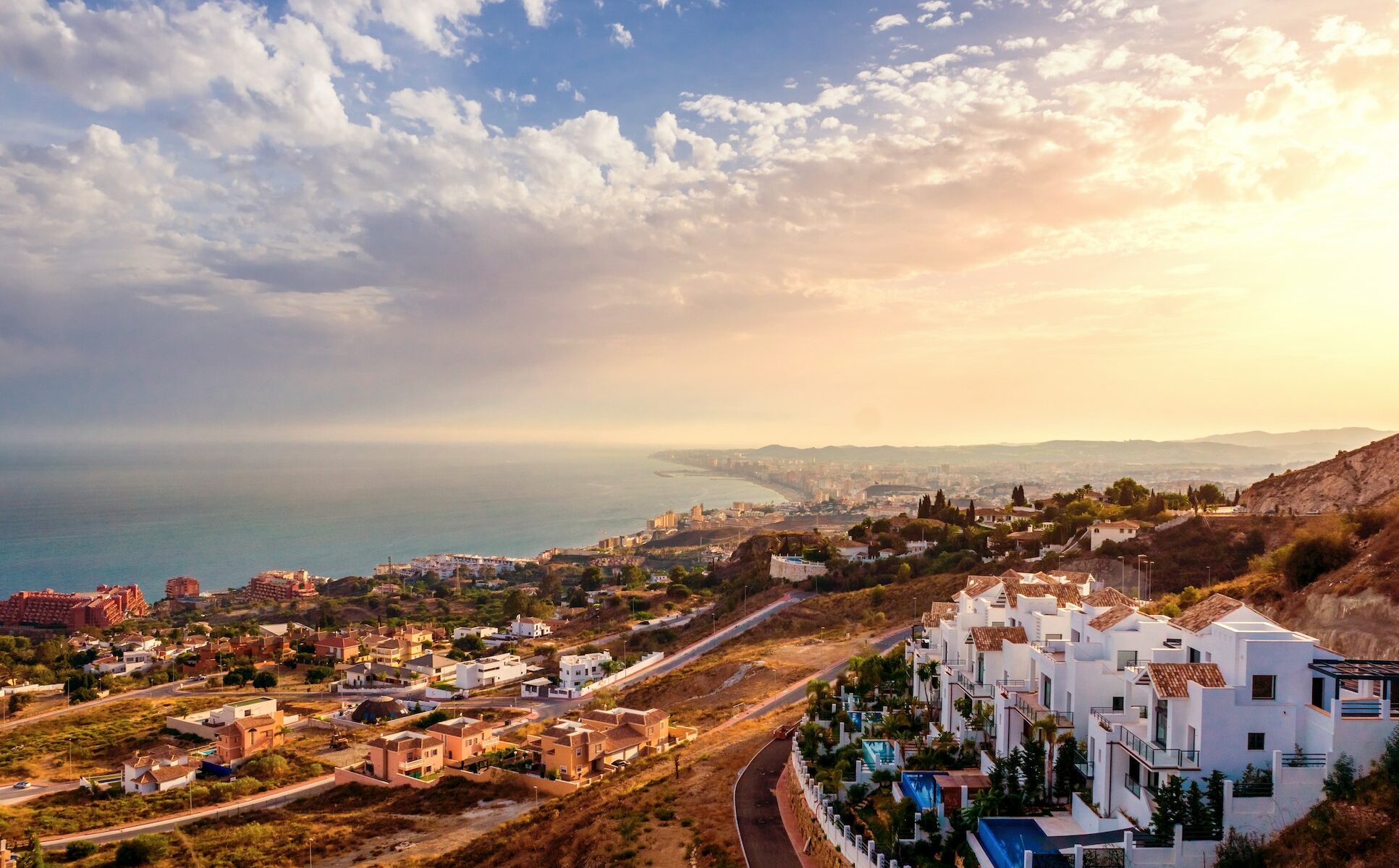
The Second Home and Tax Authorities: An Enduring Relationship
Owning a second home ties you to tax obligations each year – the evident one being the IBI. But if you choose to transform this residence into a profitable rental, expect to declare this income annually and understand that the tax rate can be sizeable, ranging up to 45%. However, maintenance costs and community fees can be claims on your tax return, easing the fiscal load.
Deductible Expenses: A Silver Lining
Spanish law allows certain expenditures to mitigate your tax dues. Mortgage interest stands out as a significant deductible when certain conditions are checked off. Banking fees, notarial costs, even registration fees associated with the acquisition can slot into your IRPF deductions.
However, not all expenses can be. The primary purchase taxes like ITP or VAT aren't directly deductible, but they form part of the acquisition value which aids in calculating future capital gains.
A Change of Scenery: The Second Home as a Primary Residence
Spanish regulations offer the possibility of reclassifying your second property as your residential hub – the primary residence. It requires living there for at least 183 days yearly and having it as the central node of your economic and family web. This switch can reveal tax deductions and lower IBI rates, bolstering the incentive to make such a shift.
Profitability: An Investment Viewpoint
Is a second home a wise investment? Opinions sway. While the investment brings leisure and lifestyle perks, the upkeep costs demand careful contemplation. Rentals, especially holiday rentals, can offer an appealing revenue stream, countering maintenance expenses.
Before embarking on this investment journey, a thorough financial breakdown is indispensable. Ensuring that the running costs align with your capabilities, while also gauging the property's utility against other potential investment options is crucial.
The Verdict
Spain's allure for second homeowners remains undiminished. Recognizing the financial aspects and preparing accordingly can transform your Spanish property dream into a delightful reality, rich with personal joy and potential monetary gain. Whether for leisure or investment, understanding these fiscal foundations is the first step towards successful second home ownership in Spain.
 1
Like
Published at 8:21 PM Comments (2)
1
Like
Published at 8:21 PM Comments (2)
Spain Announces Termination of Golden Visa Scheme
Friday, April 12, 2024

In a significant policy shift, Spanish Prime Minister Pedro Sanchez has announced the government's decision to abolish the golden visa program. This scheme allows foreigners to secure residency by investing a minimum of €500,000 in Spanish real estate. The move marks a pivotal change in Spain's approach to foreign investment and residency.
Introduced in 2013, amid a struggling housing market and the wider Euro crisis, the golden visa program was seen as a vehicle to attract foreign capital into Spain's property sector. The scheme did not only pertain to real estate investments but also extended to those injecting over €1 million into Spanish companies or more than €2 million into government bonds.
Despite its initial intent to bolster the economy, the program faced intense criticism for fueling inflation and serving as a conduit for illicit funds. In a press conference held in the Seville area of Dos Hermanas, Sanchez outlined the government's stance, emphasizing the move away from speculative property investments. This decision aligns with the Socialist-led government's broader housing policy aimed at ensuring access to affordable living spaces.
The Prime Minister detailed that an overwhelming 94% of the visas issued under this scheme were linked to real estate purchases in major cities like Barcelona, Madrid, Malaga, and Valencia. These cities are notorious for their high market prices, reflecting the program's contribution to property value inflation in sought-after urban centres.

The decision arrives at a crucial moment, ahead of imminent local elections in Catalunya and the Basque Country. With housing affordability at its heart, Sanchez's administration is keen on reforming the housing sector to guarantee that no Spaniard spends over 30% of their income on housing.
In 2022 alone, Spain awarded 2,462 golden visas for property investments surpassing the €500,000 threshold, marking a 60% increase from the year before. Since its inception, the program has issued 11,464 individual authorizations, not including the 19,805 permits granted for family reunification purposes.
The announcement follows a trend seen in other European countries, such as Ireland, Portugal, and Greece, which have recently scrapped their versions of the golden visa, pointing to the adverse effects on affordable housing stocks in major cities.
While intended to regulate the housing market and curb speculative investment, housing experts have voiced concerns over the potential economic fallout from such a move. Foreign investments, particularly in real estate, have been a significant driver of the Spanish economy, with international buyers constituting 15% of all property transactions last year—a record high.
As Spain prepares to phase out its golden visa program, the decision is poised to redefine the landscape of foreign investment and residency in the country, balancing economic benefits against social and housing policy objectives. Further details on the implementation and timeline for the scheme's termination are awaited
 1
Like
Published at 8:19 PM Comments (1)
1
Like
Published at 8:19 PM Comments (1)
A Surge in Polish Investment in Spanish Real Estate
Wednesday, April 3, 2024
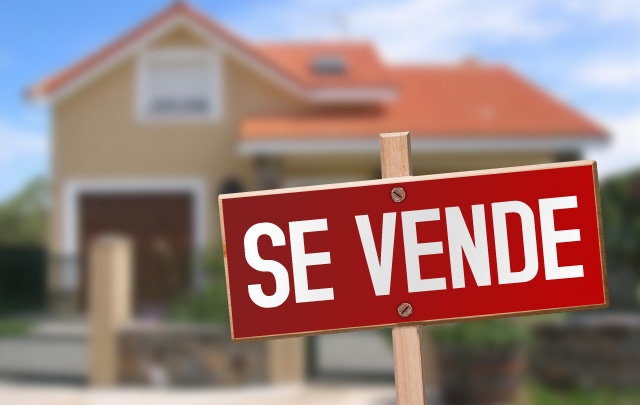
Spain has long been a popular destination for foreign real estate investment, with British, German, and French investors leading the way. However, a new trend is emerging from within Europe: an increasing interest from Polish investors. This article delves into the surge in Polish real estate investments in Spain, exploring the motivations behind this newfound interest.
The Emerging Polish Market
For decades, the Spanish real estate market has drawn significant attention from foreign buyers, largely from Britain, Germany, and France. However, recent statistics indicate an unprecedented rise in Polish investors. Commercial activities along the Mediterranean coast appear to be the primary focus for Polish investments, possibly due to the region's favourable climate and potential for substantial returns on investment.
In Q2 2023 alone, foreign real estate buyers accounted for nearly 15% of the total housing transactions in Spain, which translates to more than 22,700 sales. A striking 890 of these transactions, or roughly 4%, were conducted by Poles. Compare this to previous years, and the trend becomes clear: in 2019, Poles were responsible for a mere 1.9% of all real estate sales in Spain, but by 2023, this figure had grown to an astounding 3.6%. Polish buyers are now surpassing American and Russian buyers in their investment in Spanish real estate.
Why the Sudden Interest in Spanish Properties?
The surge in Polish investment in Spanish properties is born out of a blend of factors, with soaring inflation serving as a key catalyst. Many Poles see real estate as a stable investment, especially amidst economic uncertainties, and buying abroad offers an enticing alternative to the inflation-ridden domestic market.
Yet it's more than just fiscal practicality that's luring Poles to Spain. With its tantalizingly low cost of living, year-round sunshine, and attractive pricing, Spanish real estate is hard to resist. A brand-new development along the sunny Spanish coast can be priced as low as 1500 euros per square meter – significantly cheaper than in Warsaw, where you'd be hard-pressed to find a new property priced below 2300 euros per square meter.
War as a Contributing Factor
Another important catalyst behind this shift is the fear of war. Amid global uncertainties and instability, many Poles are increasingly viewing Spanish properties as safe havens to secure their wealth and provide a potential escape route.
Lifestyle and Climate Appeal
In addition to the economic motivations driving this trend, the pursuit of more pleasant living conditions also plays a substantial role. The Mediterranean lifestyle – complete with sunny weather, laid-back living, and plentiful outdoor recreation opportunities – stands in stark contrast to Poland's gloomier winters. In fact, six of Europe's top ten sunniest cities are in Spain.
Within Spain, the Alicante province, known for having the most sunny days per month and most hours of sunshine per year, has become especially popular among Polish investors.
As this trend continues to grow, areas popular with Polish investors are adapting quickly, adding amenities like Polish shops and schools, as well as real estate services catering specifically to Polish customers. With Poles not only investing but also making the move to enjoy their Spanish properties, regions like Torrevieja are slowly evolving into 'little Poland'. This not only helps new residents feel at home on the Spanish coast but also helps to drive even more Polish buyers to the area.
Overall, the rising Polish interest in Spanish real estate reflects both the economic and lifestyle advantages that Spain offers to foreign investors. As this trend continues, it will be interesting to see how the Spanish property market and society continue to evolve and adapt.
[source : BizBlog.pl]
 0
Like
Published at 9:17 PM Comments (2)
0
Like
Published at 9:17 PM Comments (2)
Moving to Spain: A Guide to the Spanish Digital Nomad Visa
Saturday, February 24, 2024
 In today's rapidly transforming world, the concept of work has evolved beyond traditional office spaces and rigid schedules. The rise of digital nomadism signifies this shift, where professionals leverage technology to work remotely while exploring new cultures and geographies. Spain, with its rich cultural heritage, enticing landscapes, and favourable climate, has emerged as a coveted destination for digital nomads worldwide. To embrace this modern work lifestyle, Spain has introduced the Digital Nomad Visa, making it easier for international remote workers to move to and live a new life in its vibrant locales. In today's rapidly transforming world, the concept of work has evolved beyond traditional office spaces and rigid schedules. The rise of digital nomadism signifies this shift, where professionals leverage technology to work remotely while exploring new cultures and geographies. Spain, with its rich cultural heritage, enticing landscapes, and favourable climate, has emerged as a coveted destination for digital nomads worldwide. To embrace this modern work lifestyle, Spain has introduced the Digital Nomad Visa, making it easier for international remote workers to move to and live a new life in its vibrant locales.
What is the Spanish Digital Nomad Visa?
The Spanish Digital Nomad Visa is a part of Spain's strategic initiative to attract international talent and foster economic growth by tapping into the global trend of remote working. This visa provides a legal framework for non-EU/EEA citizens to reside in Spain while working for foreign employers or as self-employed individuals. It's a response to the growing demand for flexible living and working conditions, catering to professionals who crave adventure without sacrificing their careers.
Requirements and Eligibility
To qualify for the Spanish Digital Nomad Visa, applicants must meet certain criteria, including but not limited to:
Proof of Sustained Income: Applicants must demonstrate a stable and sufficient income to support their stay in Spain. The required monthly income is typically above a threshold set by the Spanish government, often around 2,000 to 2,500 euros, though this may vary based on individual circumstances and the number of dependents.
Health Insurance: Comprehensive health insurance coverage is mandatory, ensuring that applicants have access to medical services without burdening the local healthcare system.
Clean Criminal Record: A clean criminal background is essential for securing the visa, and reaffirming the applicant's suitability for living in a new community.
Professional Status: Applicants must either be employed by a company outside of Spain or work as freelancers with foreign clients. Proof of employment or business activity is crucial.
Benefits of the Spanish Digital Nomad Visa
The introduction of the Digital Nomad Visa by Spain offers numerous advantages, making it an alluring option for professionals dreaming of a Mediterranean lifestyle:
Legal Residence: The visa grants legal residence in Spain for an initial period, usually one year, with the possibility of renewal for longer stays.
Access to Spanish Life: Visa holders unlock the door to Spain's rich culture, exquisite cuisine, and diverse landscapes-from bustling cities to tranquil beaches.
Favourable Tax Treatment: Digital nomads may benefit from specific fiscal policies designed to ease the transition and encourage long-term stays.
Work-Life Balance: Spain is renowned for its emphasis on work-life balance, offering an environment that fosters both professional productivity and personal well-being.
The Beckham Rule: A Unique Financial Incentive
The Beckham Rule is a special tax regime for expatriates, reducing the tax on the first €600,000 of Spanish income to just 24%. This also means the Wealth Tax and new Solidarity Tax only apply to Spanish assets, not those held in other countries.
How to Apply
The application process for the Spanish Digital Nomad Visa involves several steps, including submitting documentation that verifies the previously stated. Prospective applicants are encouraged to consult the Spanish consulate or embassy in their home country for detailed guidance, as procedures and requirements may vary.
Embracing the Spanish Lifestyle
Living in Spain as a digital nomad opens up a world of opportunities. Beyond the sunny beaches and historic landmarks, Spain offers a warm, welcoming community, a slower pace of life, and an exceptional quality of life. It's a chance to immerse oneself in a new culture, learn a new language, and build a life that balances work with the pleasures of discovery.
Spain's Digital Nomad Visa is more than just a permit to reside and work; it's a gateway to new experiences, friendships, and insights. For those yearning for a change of scenery without giving up their careers, this visa offers the perfect blend of opportunity and adventure. With this initiative, Spain is poised to become a leading destination for digital nomads, offering a way to live a new life filled with culture, beauty, and freedom.
Ready to start your nomadic journey in Spain? Why not take a look at what you could be renting in no time at all...
 1
Like
Published at 10:14 AM Comments (0)
1
Like
Published at 10:14 AM Comments (0)
Avoid these Pitfalls when Buying a House in Spain
Saturday, February 3, 2024
Purchasing a property in Spain is undoubtedly an exciting experience, but it can also be quite daunting, especially if you're new to the country. Spain, like any other place, has some unique factors and pitfalls that you need to be aware of when buying. To make your journey as smooth as possible, we've put together a comprehensive collection of things to avoid when buying a house in Spain.

1. Skipping the Research Phase
Spain offers a wide range of properties, each with its own charm: from modern apartments in bustling city centers to traditional farmhouses in the picturesque countryside. Before diving into the market, take some time to research the areas that interest you. Make sure to consider factors such as amenities, accessibility, and potential for rental income or resale. Thorough research can save you from costly surprises and potential disappointments down the line.
2. Ignoring Legal Advice
Common pitfalls when buying a property in Spain often involve legal issues. Engaging knowledgeable local lawyers is crucial to ensure that your interests are protected and all necessary due diligence is conducted. They can help spot potential legal problems, such as inconsistencies in property registration or pending legal disputes. Don't underestimate the value of professional legal guidance – this can be the difference between a smooth transaction and a long-term headache.
3. Overlooking Property Inspections
Just like conducting a thorough research on the local market, getting an inspection of the property is essential before committing to a purchase. A professional surveyor can identify structural issues, assess the state of essential services and utilities, and detect any potential hazards. This information is invaluable when negotiating the final price of the property and can save you a lot of money in avoiding unforeseen repairs.
4. Underestimating Additional Costs
Many buyers are surprised by the additional costs associated with a property purchase in Spain. You should be prepared for charges such as the property transfer tax (stamp duty), notary fees, lawyer fees, valuation fees, and bank charges if you need a mortgage. These costs can add up to around 10-15% of the purchase price, so make sure to budget for them in advance.
5. Rushing into a Decision
Committing to a property purchase in Spain can be a big step, so be patient and take your time. Do not rush into decisions under the pressure of agents or sellers. Visit the property multiple times, get second opinions, and ask lots of questions. If you feel uncomfortable or unsure about any aspect of the purchase, it's better to walk away than to realise too late that you've made a bad decision.
6. Neglecting Future Expenses
When looking at properties, it's easy to focus solely on the purchase price. However, be sure to consider the maintenance costs and any necessary renovation work. Older properties may require significant investments to restore them to their full potential, and this can impact your budget significantly. Additionally, make sure to factor in annual costs, such as property tax, local taxes, and utility bills.
7. Ignoring Currency Fluctuations
If you're transferring money from a different currency to buy a property in Spain, be wary of fluctuations in exchange rates. Currency fluctuations can significantly impact the affordability of your property purchase, so work with a currency exchange specialist, or try to lock in favourable rates to give you peace of mind and save on the overall cost.
8. Forgetting About Rental Regulations
If you plan to rent out your property in Spain, be sure to familiarize yourself with the local rental regulations and tax requirements. These can vary between regions, and noncompliance can lead to fines. Recruit a local property management company to help you navigate these laws and ensure your rental property is a success.
9. Miscommunication
Language barriers can often cause misunderstandings when buying a property in Spain. If your Spanish is not fluent, consider hiring an interpreter or a bilingual lawyer to ensure smooth communication between all parties involved. Miscommunication can lead to unnecessary complications and delays.
10. Losing Sight of Your Goals
Finally, always keep your goals in mind. Whether you're buying a property as a holiday home, an investment, or a permanent residence, stay focused on what you want and need. Remember your initial plan, and don't be tempted to compromise too much on the features that matter to you.
By avoiding these common pitfalls, you'll be better equipped to purchase a property that meets your expectations. With careful planning, thorough research, and professional guidance, buying a house in Spain can be a rewarding and enjoyable experience
 2
Like
Published at 9:13 AM Comments (0)
2
Like
Published at 9:13 AM Comments (0)
Malaga: The Executive Nomad's Paradise According to Savills
Friday, September 1, 2023

Malaga, internationally renowned for its paradisiacal coast, charismatic culture, and pleasing climate, has recently achieved a new accolade. According to the recent Savills' annual ranking, Malaga now proudly stands as the second-best city in the world for executive nomads.
Savills, a globally recognised estate agency and part of the FTSE 250 index, is well-respected for its extensive research related to real estate markets across the world. Their recent ranking identifies Malaga as a leading hotspot for executive nomads, greatly boosting the city's global prestige.
The Rise of Remote Work
The sudden proliferation of remote work, triggered in part by the COVID-19 pandemic, has empowered professionals to adopt a nomadic lifestyle, escaping the limitations of a fixed work location. The phenomenon of “executive nomads” has emerged rapidly, transforming the traditional workspace paradigm. This cohort comprises professionals who value flexibility and emphasise enhancing work-life balance while maintaining high productivity and standards of work.
Why Malaga?
In this new work-from-anywhere world, why does Malaga shine so brightly on the map of executive nomads?
The city, which is a marvel of the Andalusian coast in southern Spain, ticks multiple boxes for those who work remotely. Malaga promises a pleasant, Mediterranean climate that allows for year-round outdoor activities. The city's rich cultural heritage, paired with its modern infrastructure, makes it as equally attractive to history buffs as it is to fans of contemporary architecture.
Moreover, Malaga offers a lower cost of living compared to many Western European and North American cities, an aspect that appeals to many executives. Its strategic geographical location allows for easy travel across Europe and Africa, which is a significant factor for globetrotting nomads.
Apart from these factors, the city hosts high-speed internet connectivity and co-working spaces, which are the lifelines of remote work. Also, the presence of international schools and quality healthcare make it an ideal location for those with families.
Given these factors, it doesn't come as a surprise that Savills recognises Malaga as a top choice for executive nomads.

Impacts and Prospects
This recognition holds significant implications for Malaga. Primarily, it paves the way for an influx of remote-working professionals, fostering a micro-economy based on this new work culture.
The city's hospitality, real estate, and tourism sectors can all benefit from this rising trend. With the likely influx of digital nomads, local businesses can expect a significant boost, contributing to the city’s overall economic growth.
Subsequently, the distinction also holds prospects for further infrastructure developments and cultural exchanges, initiating a cycle that would further cement Malaga's appeal to the executive nomads around the globe.
The validation from Savills reconfirms Malaga’s position as a global participant in the new work culture paradigm, offering promising prospects for its future growth and development. These findings also serve as a confirmation of the rise of a new work culture that prioritises flexibility and work-life balance, ultimately transforming the professional landscape in a post-pandemic world.
 1
Like
Published at 10:14 AM Comments (4)
1
Like
Published at 10:14 AM Comments (4)
How to Calculate the Price of a Flat in Spain?
Friday, June 30, 2023
When we face the purchase or rental of a house, we always face the first doubt: Is it the right time to buy a property? If we decide it is, we'll start the search, and when we find a flat we like, we will face the next doubt: Is it well-priced? Is it an expensive or cheap house? How could I calculate the appropriate price for this flat?
It doesn't matter if you are the owner, the buyer, the landlord, or the potential tenant; everyone doubts what the adequate price for a house on sale or rent would be, and it is not always easy to identify cheap flats.

Formulas to Calculate Housing Price
Sale and rental prices have a relationship that, despite being variable depending on the time and other specific characteristics (such as location or city where the property is located), allows you to have an approximate idea.
In fact, we will see a series of simple ratios that will lead us to the approximate price of any property in relation to the rent price.
a) Gross Profitability of Rent
The gross profitability of rent is the percentage resulting from dividing the annual money we would get from a rental property by its theoretical sale price. Even if we are not going to rent our house, it is a good reference to know if we are making a good investment.
Gross Profitability of Rent = (annual rental income/purchase price) * 100
For example, with a house that rents for 12,000 euros per year (1,000 euros/month) and is worth 240,000 euros, it is said to offer a gross profitability of 5% according to this formula:
(12,000/240,000) x 100 = 5%
Keep in mind that we are talking about gross profitability (not net) because it is the ratio used for this calculation by the Bank of Spain. If we wanted to calculate the net profitability, we would subtract the expenses from the income, but that number would not be useful for the calculations in this article, for which gross profitability should be used.
b) The PER
The PER (Price Earnings Ratio) is another formula that allows us to identify if we are moving in the right price when buying a house. It involves dividing the sale price by the rental price. This data is equivalent to the number of times the annual rental income is contained in the sale price, or in other words, the number of years it would take to pay for a house through the rent under current conditions. It is a universally accepted ratio for valuing assets such as companies, homes, etc.
PER = (purchase price / annual rental income)
The PER of the previous house would be 20 times, and the calculation by which it was arrived at that data would be:
(240,000 / 12,000) = 20 times
Table of Equivalency Between Rent and Sale Price
With the above data, if we had two of the three previous figures (sale price, rent price, or PER), we could calculate the third. As we have the gross profitability data of all of Spain offered by the Bank of Spain (BdE) updated quarterly, we only need to know a reliable sale or rent figure to calculate an approximation of the other variable.
Thus, according to the latest report from the Bank of Spain (BdE), the gross profitability of renting a home in Spain at the end of the first quarter of 2023 is 3.4%. If we calculate the inverse of that data and multiply it by 100 (100/3.4), we would obtain the PER. In this case, the PER would be 29.4 years or almost 353 months.
In summary, if we are sure that an identical or similar house to our interest is rented at a certain price, currently you only need to multiply the monthly rent price by 353 months to obtain a suitable approximate sale price.
For example, if a house is rented for 1,500 euros per month and multiplied by the monthly rent price by 353 months, we would obtain that the selling price should be around 529,500 euros under current conditions.
Similarly, if we have a house that could be sold for 270,000 euros, just divide by 353 to know that its rent price should be about 765 euros monthly.
With this data and knowing that the gross profitability data changes over time and should be checked regularly, we can construct a table that relates the rent price to the current sale price.
Equivalencies between the rent and the purchase price with the average PER in Spain
Rent Price Purchase Price
300 € 105,900 €
400 € 141,200 €
500 € 176,500 €
600 € 211,800 €
700 € 247,100 €
800 € 282,400 €
900 € 317,700 €
1,000 € 353,000 €
1,100 € 388,300 €
1,200 € 423,600 €
1,300 € 458,900 €
1,400 € 494,200 €
1,500 € 529,500 €
1,600 € 564,800 €
1,700 € 600,100 €
1,800 € 635,400 €
1,900 € 670,700 €
2,000 € 706,000 €
2,100 € 741,300 €
2,200 € 776,600 €
2,300 € 811,900 €
2,400 € 847,200 €
2,500 € 882,500 €
2,600 € 917,800 €
2,700 € 953,100 €
2,800 € 988,400 €
2,900 € 1,023,700 €
3,000 € 1,059,000 €
Note: The data has been calculated according to the latest data published by the Bank of Spain for a gross profitability of 3.4% in the first quarter of 2023 (PER 29.4 times). To move from one column to another, you must multiply or divide one of the data by 353 months. This coefficient is valid for current data but varies over time.
[source of data - Bankinter]
 1
Like
Published at 9:28 PM Comments (1)
1
Like
Published at 9:28 PM Comments (1)
Discover the Orange Blossom Coast
Friday, May 5, 2023
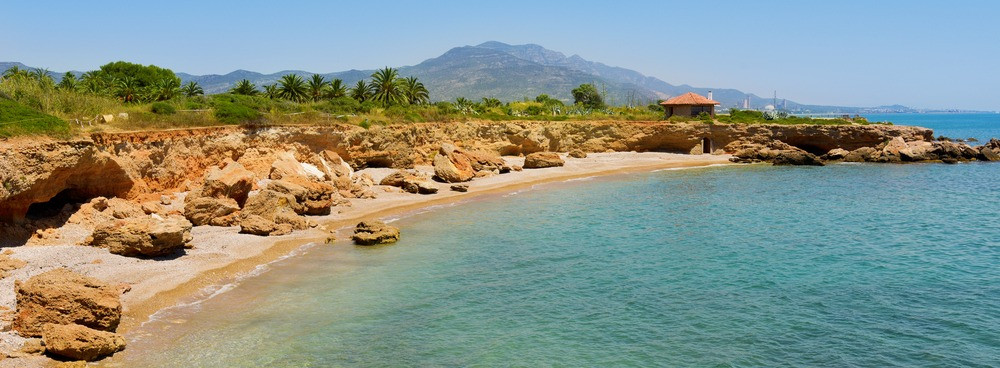
The Costa de Azahar, also known as the Orange Blossom Coast, is located in the province of Castellón. It is a stunning coastal region that boasts a diverse array of landscapes, ranging from rocky coves and secluded beaches to lush forests and citrus groves. Living in the Costa de Azahar is an experience that many people dream of, with its vibrant culture, breathtaking scenery, and relaxed way of life.
One of the most significant advantages of living in the Costa de Azahar is the climate. With an average of 320 days of sunshine per year, this region is perfect for those who love warm weather. The summers are hot and dry, with temperatures averaging around 30°C, while the winters are mild and comfortable. This climate is ideal for outdoor activities such as hiking, swimming, and cycling, making it a popular destination for adventure seekers and nature lovers alike.
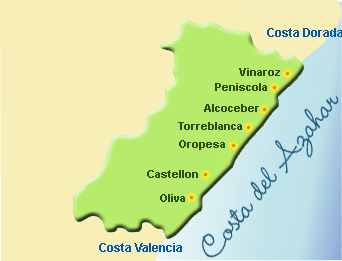 In addition to the climate, the Costa de Azahar is famous for its stunning beaches. With over 120 kilometres of coastline, there are plenty of options for sunbathing, swimming, and water sports. Some of the most popular beaches include Playa del Norte in Castellón de la Plana, Playa del Moro in Alcossebre, and Playa de la Concha in Oropesa del Mar. Each of these beaches has its unique charm and character, and there is something to suit everyone's taste. In addition to the climate, the Costa de Azahar is famous for its stunning beaches. With over 120 kilometres of coastline, there are plenty of options for sunbathing, swimming, and water sports. Some of the most popular beaches include Playa del Norte in Castellón de la Plana, Playa del Moro in Alcossebre, and Playa de la Concha in Oropesa del Mar. Each of these beaches has its unique charm and character, and there is something to suit everyone's taste.
Aside from the beaches, the Costa de Azahar is also renowned for its gastronomy. This region is known for its fresh seafood, locally grown fruits and vegetables, and traditional rice dishes. Some of the most popular dishes include paella, arroz a banda, and fideuà. The local wine is also excellent, with many vineyards in the area producing high-quality wines.
The Costa de Azahar is a culturally rich region, with a history that dates back to ancient times. The area is home to many charming villages and towns, each with its unique architecture, traditions, and festivals. Some of the most famous festivals in the region include the Fiestas de la Magdalena in Castellón de la Plana, the Fiestas de San Juan in Peñíscola, and the Fiestas de la Virgen de la Salud in Algemesí. These festivals are an excellent opportunity to experience the local culture and traditions and are a highlight of living in the Costa de Azahar.
 In terms of infrastructure, the Costa de Azahar is well-connected and has excellent transport links. The region is served by Castellón Airport, which offers domestic and international flights. There are also regular bus and train services that connect the towns and cities of the region. The healthcare system is also of a high standard, with modern hospitals and medical centres in each town. In terms of infrastructure, the Costa de Azahar is well-connected and has excellent transport links. The region is served by Castellón Airport, which offers domestic and international flights. There are also regular bus and train services that connect the towns and cities of the region. The healthcare system is also of a high standard, with modern hospitals and medical centres in each town.
In conclusion, living in the Costa de Azahar is a dream come true for many people. The region's stunning natural beauty, vibrant culture, and relaxed way of life make it an excellent place to call home. Whether you are looking for a peaceful retirement destination, a place to raise a family, or an exciting new adventure, the Costa de Azahar has something to offer everyone.
 2
Like
Published at 4:35 PM Comments (0)
2
Like
Published at 4:35 PM Comments (0)
Foreigners Take Over Property Market in Spain Again...
Tuesday, February 14, 2023
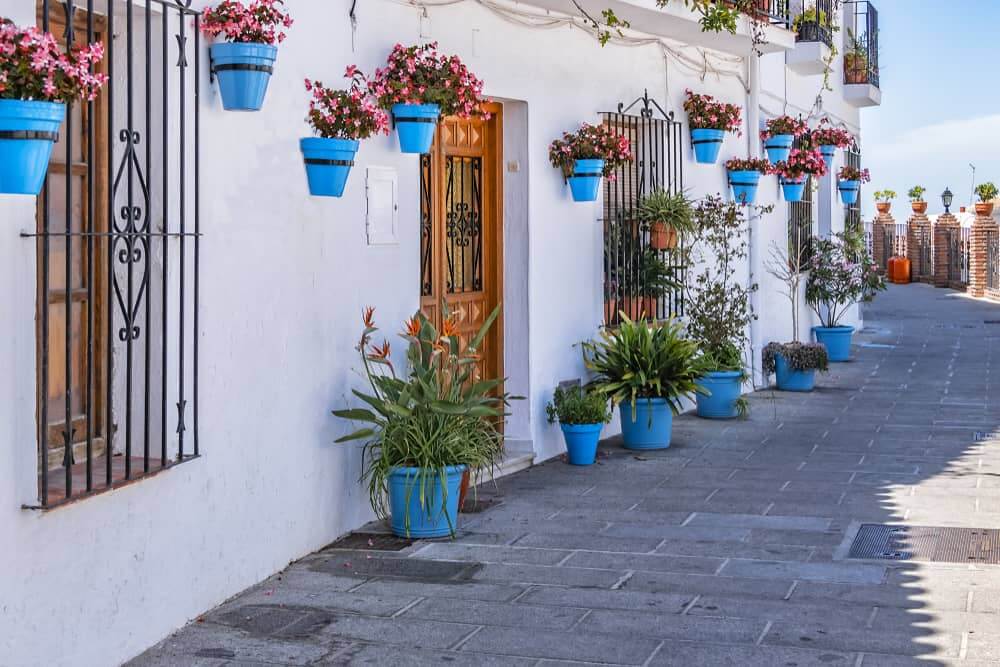
Foreigners are acquiring more real estate at a higher price. Nationalities such as the Dutch, the Ukrainians or the Americans are gaining prominence in the market.
Foreigners have returned strongly to the Spanish housing market after the pandemic. In 2022, home purchases have broken records and the average price per m2 of real estate has reached the highest level since there are records. In the luxury sector, foreign demand has even grown more than national demand.
During this year, the British, Germans and French have remained the leading foreign buyers, although other nationalities have gained prominence. For example, the Dutch, the Norwegian, the Irish and the Ukrainian, although for different reasons. Demand from the US and Latin America has also gained momentum, boosted by the strength of the dollar against the euro.
Among the most important news in recent months is also the implementation of the tax on large fortunes, a new tax that must be paid by taxpayers with assets of more than 3 million euros and that will also affect foreign non-residents, which could have consequences on the real estate market.
The notaries estimated 72,987 housing transactions in Spain were led by foreign buyers in the first half of the year, the highest figure since 2007. In addition, these operations represented 20.3% of the total registered in the country as a whole, equaling the record registered in the second half of 2015; and the average price that they have paid for the properties has marked maximums. A trend that continued in the third quarter. According to the College of Registrars, between June and September, foreigners purchased 26,728 homes in Spain, representing 15.92% of the total number of registered sales and a new record in the historical series of this body, both in volume and weight over the total operations. The figures show a clear and consolidated upward trend and, above all, respond to the notable strength of the home transfer market.
On the other hand, foreign customers are increasingly interested in the luxury segment. This is corroborated by a study by the specialized real estate agency Lucas Fox, which states that the growth of foreign demand for luxury housing was faster than that of the local one in the first half of the year, reaching a record market share of 14.7 % at the end of the first semester. The company affirms that demand has been diversifying throughout 2022 and insists that "in an international context of growing uncertainty, foreign buyers have shown their confidence in Spanish real estate as a lifestyle option and a solid investment ”.
Foreigners have paid the highest price in history to buy homes in Spain in 2022. This is shown by data from the General Council of Notaries, which put the average price paid by foreign buyers for each m2 of houses at 2,062 euros during the first semester of the year. The amount not only shows an increase of 10.6% year-on-year but also breaks the record for the series collected by notaries since 2007, in the midst of the real estate bubble.
The new maximum price has been driven mainly by the average price paid by non-resident foreigners for their homes (€2,522/m2, also a record, growing by 2.9% year-on-year), and which far exceeds that paid by residents (€1,622/m2, increasing by 8.2% compared to the first half of 2021) and nationals (€1,560/m2, with an increase of 5.2% year-on-year).
In the first half of the year, prices grew in year-on-year terms across the whole of Spain, with Extremadura at the top of the list, with a rise of 34.3%; followed by Asturias (27.5%), Murcia (19%), Madrid (16.6%), Aragon (16.1%), Valencian Community (13.6%), Canary Islands (13.1%), Cantabria (11%) and Catalonia (10.4%).
The foreigners who paid the highest amounts per m2 in the first half of the year were those from Denmark (€2,870/m2), the USA (€2,837/m2), Norway (€2,701/m2), Sweden (€2,701/m2 ), Germany (€2,657/m2) and Switzerland (€2,567/m2). Buyers from the Netherlands, France, Belgium, Italy and Ireland also exceeded the average price paid by foreigners as a whole (€2,062/m2). On the other hand, Moroccans (€694/m2), Romanians (€1,097/m2) and Ecuadorians (€1,198/m2) paid the lowest average prices.
British, German and French continue to be the most prominent nationalities in the market by volume of operations, although this year buyers from the Netherlands, Norway, Ireland, Ukraine, the US and Latin America have gained prominence, although for different reasons.
According to data from notaries, Dutch, Norwegian and Irish foreigners led the increase in home sales in Spain, with increases of more than 100% in all three cases. In other words, between January and June, they formalized more than double the number of transactions than in the same period of the previous year.
Experts attribute this rise to factors such as the promotion of teleworking, the good climate, good communications, the technological 'hubs' that are consolidating in Spain, housing prices that are comparatively lower than in other European countries and the energy crisis.
Another leading nationality in 2022 has been the Ukrainian who, coinciding with the outbreak of the war with Russia, has formalized the highest number of home sales in Spain in history. According to notaries, between January and June, citizens from Ukraine purchased 1,237 homes in Spain, 73% more than in the first half of 2021 and almost 60% above the registered average of the last 15 years (774 units).
The increase in demand has occurred both in the traditional housing market and in the luxury sector, while the three provinces that arouse the most interest are Alicante, Valencia and Barcelona.
Buyers and investors from the US and Latin America have also gained prominence in the market, who have wanted to take advantage of the weakness of the euro, which in 2022 has lost parity with the dollar, to buy properties at a discount.
On the other hand, the British, the nationality that has stood out the most throughout history in the Spanish market, is losing ground. In the third quarter, 9.3% of these customers came from the United Kingdom, the lowest figure since registrars collect data, and a far cry from the almost 24% they came to represent of sales to foreigners in 2015.
Experts affirm that the preferences of foreigners are large houses, with a terrace and pool, located mainly in coastal areas, to be used as a second residence in most cases. Although interest is also growing in taking advantage of longer seasons or stays and teleworking, beyond the classic factors such as good weather, air connectivity or the cost of living, which is lower than in their countries of origin.
By location, the Costa Blanca (Alicante), the Costa del Sol (Málaga), the Balearic Islands and the Canary Islands continue to be the areas where foreigners have a greater weight in the housing market. However, depending on nationality there is also interest in buying a home in municipalities located in provinces such as Barcelona and Valencia in the case of Germans; or Madrid and Girona in the case of the French. On the other hand, the autonomous cities of Ceuta and Melilla and Algeciras (Cádiz) have been the areas most in demand by buyers from Morocco. The British, for their part, have focused on the capitals Madrid and Barcelona.
A study of the leading real estate marketplace in southern Europe confirms that there is also interest from foreigners in towns with less than 5,000 inhabitants. In fact, in 22 towns the demand to buy housing from other countries is higher than the national demand. The most prominent is Fuente Obejuna (Córdoba), followed by Garcirrey and El Milano (both in Salamanca), Cala Ratjada (Mallorca), Laroya (Almería), Valle Gran Rey (La Gomera) and Cómpeta (Málaga). In some of these small municipalities, the price of housing is below 500 euros/m2, while in others it exceeds 1,700 euros/m2.
 3
Like
Published at 7:38 PM Comments (0)
3
Like
Published at 7:38 PM Comments (0)
Record Property Sales in Spain last Year
Wednesday, February 8, 2023
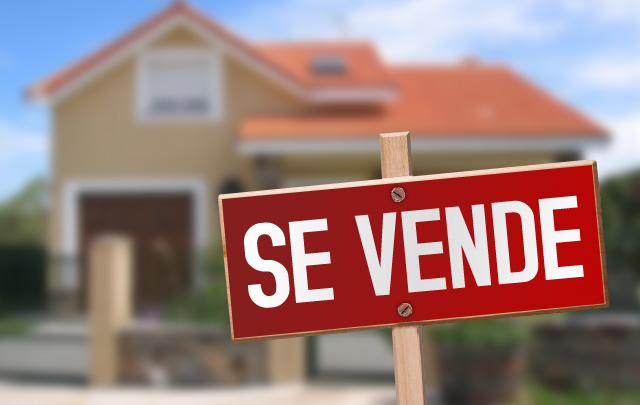
The General Council of Notaries has published the annual data on home sales and mortgages for 2022, which confirms the good year for the residential market in terms of operations, with almost 720,000 transactions, representing an increase of 6.1% year-on-year, and reaching maximums of 15. It is still 15% lower than when compared to 2007, but more than 90,000 houses have been sold in the Community of Madrid, the Valencian Community and, above all, Andalusia, which concentrates 20% of the total operations. The four autonomies account for 63.7% of the sales volume in 2022.
No region exceeds the data for total housing operations compared to 2007, except Madrid, barely 0.5% more, but adds fewer sales than in 2021, falling 1.1% year-on-year. Catalonia does improve by 2021 (5.5%), but it has fallen less than 600 transactions from the 2007 record (-0.5%).
Housing transactions increased in 14 autonomous regions compared to 2021, with the Canary Islands (26.9%) in the lead and its more than 31,000 operations, mainly due to the increase in operations on apartments, reaching more than 23,700 sales, but also chalets (21.3%), exceeding 7,500 sales for the first time in 15 years.
Along with the Canary Islands, two other autonomous regions linked to the tourism, second-home and international markets, such as the Balearic Islands and the Valencian Community, have also registered record sales of single-family homes, with more than 4,400 and 28,200 operations, respectively, even more than in 2007.
Despite the fact that in Madrid, home sales have fallen compared to 2021, the region had never registered so many operations on apartments, with more than 79,630, barely 0.2% more than the previous year, but in no other region have they exceeded the figures for 2021.
The Balearic Islands and Madrid hit the ceiling in the prices of homes sold in 2023. The average price of those sold transacted in 2023 increased by 7.2% in the country as a whole, to 1,615 euros/m2. However, it remains 9.8% below the 2007 price (1,790 euros/m2). But not in all communities this has happened.
Two regions with high demand in the residential market such as the Balearic Islands and Madrid have reached the maximum average price recorded in the last 15 years, with 3,200 euros/m2 and 2,657 euros/m2, respectively, the highest in Spain.
In fact, Madrid (12.2%) leads the price increases this 2022, exceeding double digits together with Murcia (11.0%), the Canary Islands (10.4%) and the Valencian Community (10.3%). The Balearic Islands grew by 7.2% year-on-year, but the average price of homes had never exceeded 3,000 euros/m2.
The rise in apartment-type properties in the Balearic Islands (10.9%) has indeed been one of the highest during 2022, only surpassed by Madrid (11.7%), to leave sales prices among the highest in the country, with 2,958 euros/m2 and 2,881 euros/m2, respectively, even surpassing 2007.
The Balearic Islands also reached a ceiling in the prices of single-family homes (3,551 euros/m2) after growing 4.2% year-on-year. The prices of villas in Madrid (2,022 euros/m2) rose by 11.5% but remained below 2008 (2,029 euros/m2).
 0
Like
Published at 8:34 AM Comments (0)
0
Like
Published at 8:34 AM Comments (0)
Spam post or Abuse? Please let us know
|
|